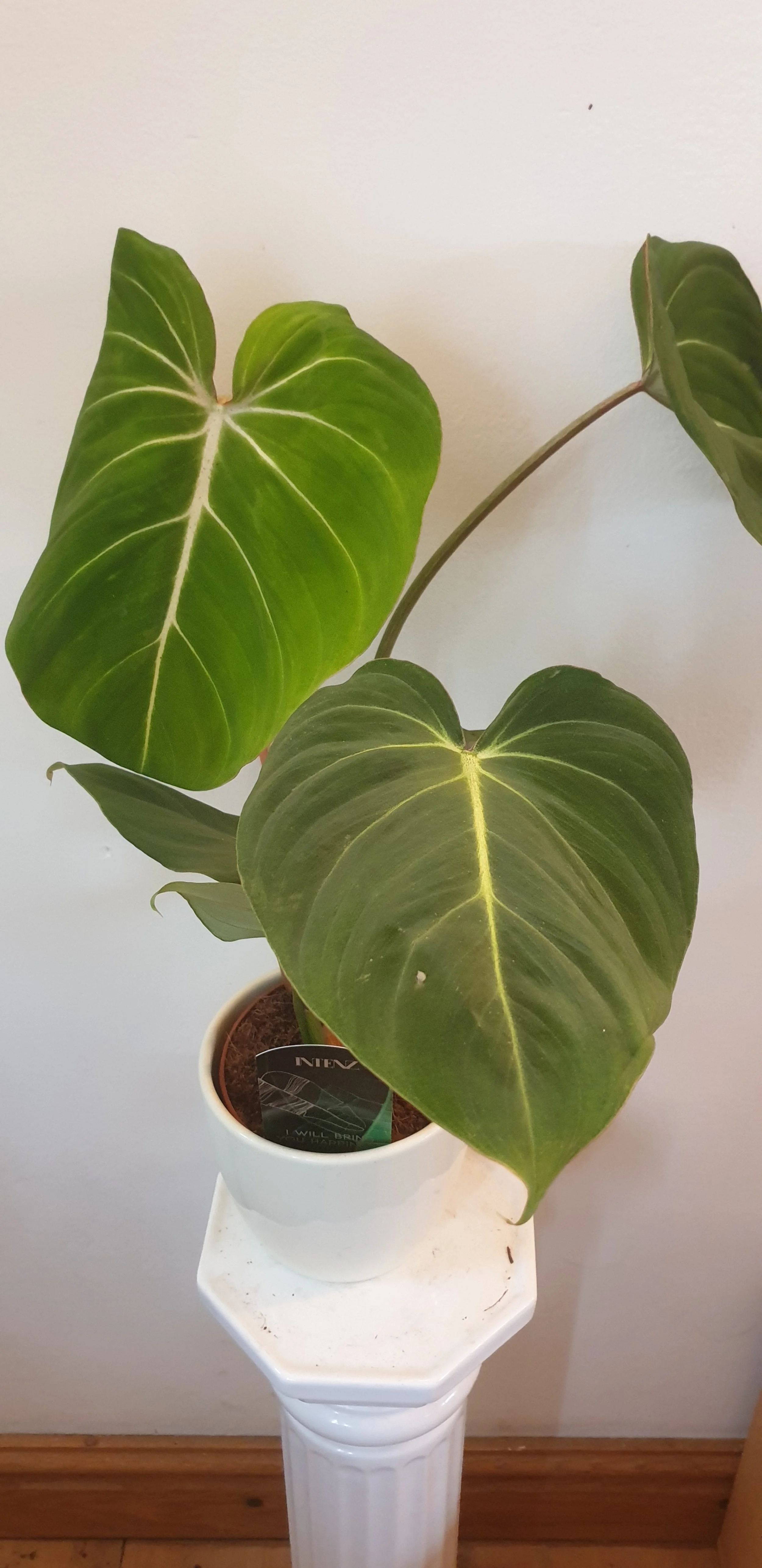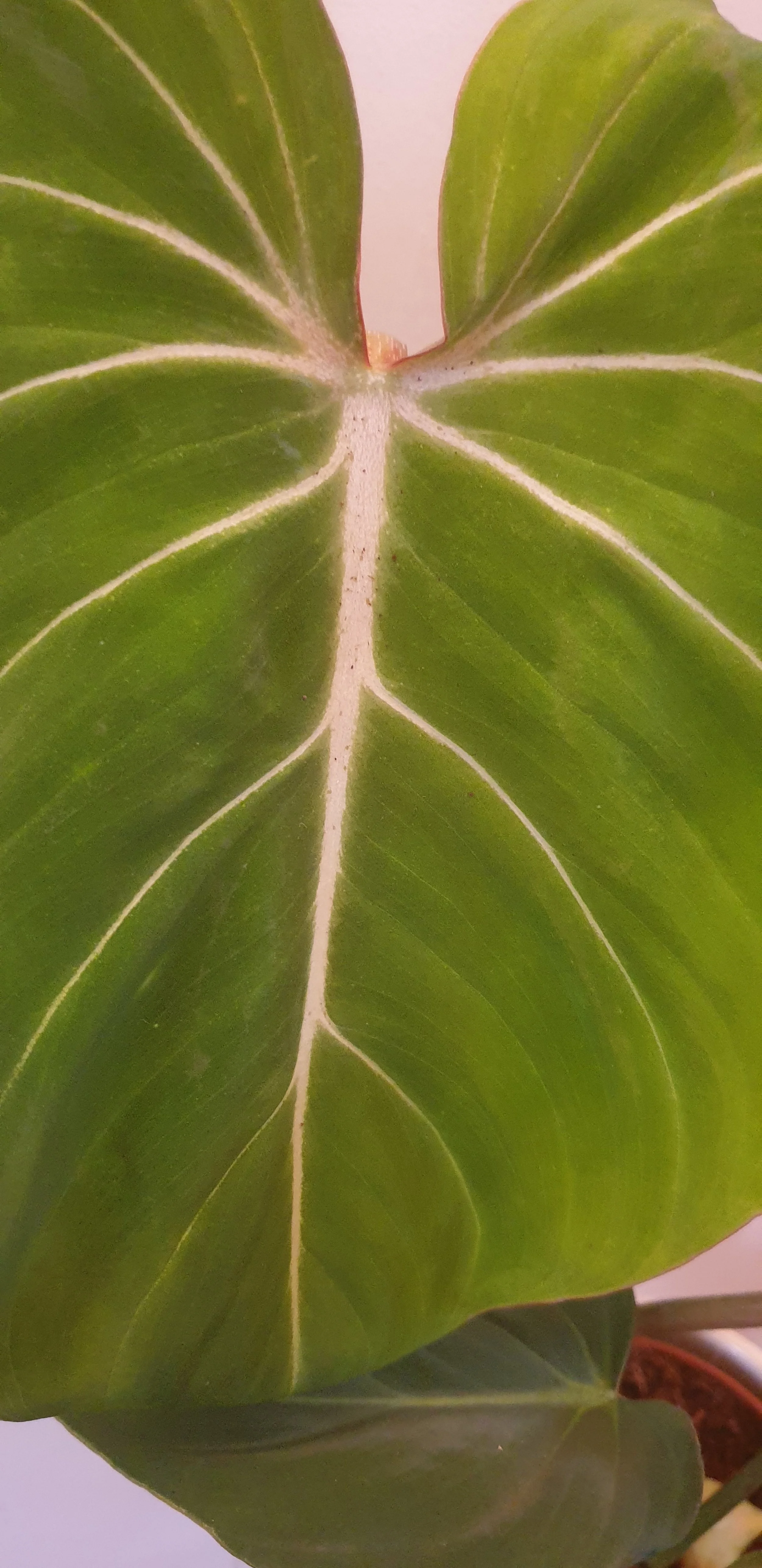 Image 1 of 2
Image 1 of 2

 Image 2 of 2
Image 2 of 2



Philodendron gloriosum in a 12cm pot.
Philodendron gloriosum is one of the most iconic foliage plants prized for its velvety leaves and dramatic appearance.
Botanical Name: Philodendron gloriosum
Family: Araceae
Native to: Colombia and other parts of Central & South America
Growth Habit: Terrestrial crawler, not a climber — it grows horizontally along the surface with a creeping rhizome.
✅ Key Features:
Foliage: Large, heart-shaped velvety green leaves with prominent white or pinkish veins.
Leaf Texture: Velvety to the touch; matte finish that catches soft light beautifully.
Size: Leaves can grow up to 60 cm (2 ft) across in mature specimens, especially with space to spread.
Rhizome Growth: Grows along the soil horizontally. The rhizome should not be buried.
---
🪴 Philodendron gloriosum – Care Guide
This plant is moderately easy to care for but requires attention to its crawling growth habit and humidity needs.
Care Aspect Best Practice
Light Bright, indirect light is best. Avoid direct sunlight — it can burn the leaves and fade the velvety texture. <br> Tolerates medium light but grows slower.
Watering Water when the top 2–3 cm (1 inch) of soil is dry. Keep the soil evenly moist but not soggy. <br> Do not allow the rhizome to sit in wet soil — can cause rot.
Humidity Prefers high humidity (60–80%). Essential for healthy leaves and to avoid crispy edges. <br> Use a humidifier or pebble tray if indoor air is dry.
Temperature Ideal range: 18–27°C (65–80°F). Protect from drafts and temperatures below 15°C (59°F).
Soil Use a chunky, well-draining aroid mix: <br> potting soil + orchid bark + perlite + coco coir or sphagnum moss.
Potting & Rhizome Care Use a wide, shallow pot to accommodate its crawling rhizome. <br> Keep the rhizome slightly above or level with the soil surface. Do not bury it.
Fertilizer Feed every 4–6 weeks during growing season (spring/summer) with a balanced, diluted liquid fertilizer. <br> Pause or reduce feeding in fall/winter.
Repotting Repot every 1–2 years or when rhizome reaches pot edge. Shift sideways rather than deep.
Support Doesn’t need a moss pole — it’s a crawler. You can use long planters or let it “walk” across the pot.
---
✂️ Propagation
Propagate by rhizome cuttings:
1. Use a clean knife to cut a section with at least one node and healthy leaf.
2. Let the cut callous for 1–2 days.
3. Place in moist sphagnum moss, water, or soil until roots develop.
---
🐛 Common Problems & Solutions
Problem Cause Solution
Yellowing leaves Overwatering or poor drainage Let soil dry more between waterings; check pot drainage
Brown crispy edges Low humidity Increase humidity via humidifier or misting
Rhizome rot Burying the rhizome or soggy soil Keep rhizome above soil; use airy mix
Slow growth or small leaves Low light or underfeeding Move to brighter indirect light; feed monthly
Pests Spider mites, thrips, mealybugs Wipe leaves, isolate plant, use neem oil or insecticidal soap
---
🐾 Pet Safety
❌ Toxic to pets and humans if ingested (contains calcium oxalate crystals). Keep away from curious pets.
---
✅ Quick Care Summary
Feature Detail
Light Bright, indirect
Water Keep soil moist, not wet
Humidity 60–80% ideal
Soil Chunky, airy aroid mix
Growth Crawling rhizome, not climbing
Fertilizer Monthly during active growth
Toxicity Toxic to pets
Philodendron gloriosum is one of the most iconic foliage plants prized for its velvety leaves and dramatic appearance.
Botanical Name: Philodendron gloriosum
Family: Araceae
Native to: Colombia and other parts of Central & South America
Growth Habit: Terrestrial crawler, not a climber — it grows horizontally along the surface with a creeping rhizome.
✅ Key Features:
Foliage: Large, heart-shaped velvety green leaves with prominent white or pinkish veins.
Leaf Texture: Velvety to the touch; matte finish that catches soft light beautifully.
Size: Leaves can grow up to 60 cm (2 ft) across in mature specimens, especially with space to spread.
Rhizome Growth: Grows along the soil horizontally. The rhizome should not be buried.
---
🪴 Philodendron gloriosum – Care Guide
This plant is moderately easy to care for but requires attention to its crawling growth habit and humidity needs.
Care Aspect Best Practice
Light Bright, indirect light is best. Avoid direct sunlight — it can burn the leaves and fade the velvety texture. <br> Tolerates medium light but grows slower.
Watering Water when the top 2–3 cm (1 inch) of soil is dry. Keep the soil evenly moist but not soggy. <br> Do not allow the rhizome to sit in wet soil — can cause rot.
Humidity Prefers high humidity (60–80%). Essential for healthy leaves and to avoid crispy edges. <br> Use a humidifier or pebble tray if indoor air is dry.
Temperature Ideal range: 18–27°C (65–80°F). Protect from drafts and temperatures below 15°C (59°F).
Soil Use a chunky, well-draining aroid mix: <br> potting soil + orchid bark + perlite + coco coir or sphagnum moss.
Potting & Rhizome Care Use a wide, shallow pot to accommodate its crawling rhizome. <br> Keep the rhizome slightly above or level with the soil surface. Do not bury it.
Fertilizer Feed every 4–6 weeks during growing season (spring/summer) with a balanced, diluted liquid fertilizer. <br> Pause or reduce feeding in fall/winter.
Repotting Repot every 1–2 years or when rhizome reaches pot edge. Shift sideways rather than deep.
Support Doesn’t need a moss pole — it’s a crawler. You can use long planters or let it “walk” across the pot.
---
✂️ Propagation
Propagate by rhizome cuttings:
1. Use a clean knife to cut a section with at least one node and healthy leaf.
2. Let the cut callous for 1–2 days.
3. Place in moist sphagnum moss, water, or soil until roots develop.
---
🐛 Common Problems & Solutions
Problem Cause Solution
Yellowing leaves Overwatering or poor drainage Let soil dry more between waterings; check pot drainage
Brown crispy edges Low humidity Increase humidity via humidifier or misting
Rhizome rot Burying the rhizome or soggy soil Keep rhizome above soil; use airy mix
Slow growth or small leaves Low light or underfeeding Move to brighter indirect light; feed monthly
Pests Spider mites, thrips, mealybugs Wipe leaves, isolate plant, use neem oil or insecticidal soap
---
🐾 Pet Safety
❌ Toxic to pets and humans if ingested (contains calcium oxalate crystals). Keep away from curious pets.
---
✅ Quick Care Summary
Feature Detail
Light Bright, indirect
Water Keep soil moist, not wet
Humidity 60–80% ideal
Soil Chunky, airy aroid mix
Growth Crawling rhizome, not climbing
Fertilizer Monthly during active growth
Toxicity Toxic to pets